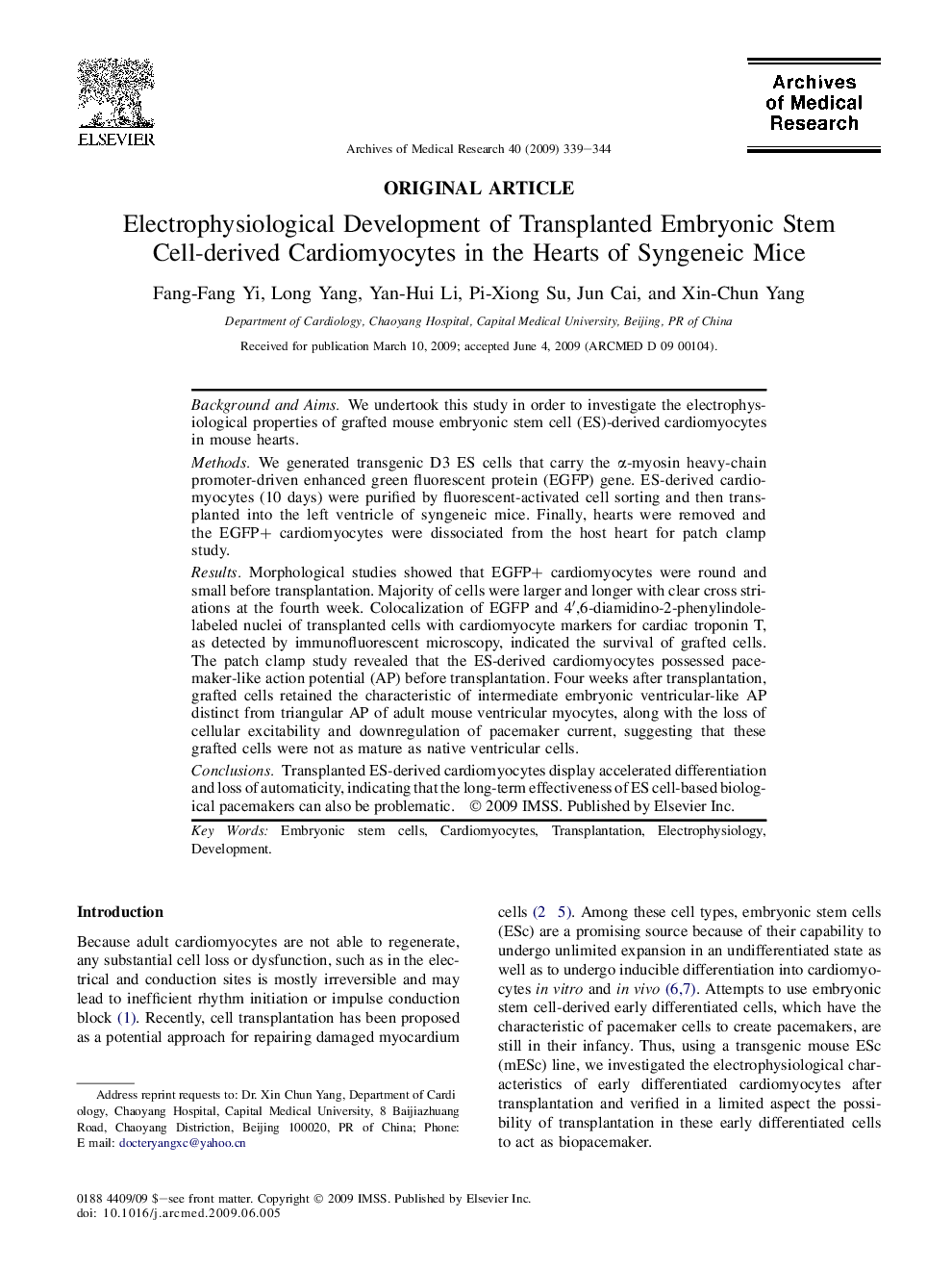| Article ID | Journal | Published Year | Pages | File Type |
|---|---|---|---|---|
| 3446855 | Archives of Medical Research | 2009 | 6 Pages |
Background and AimsWe undertook this study in order to investigate the electrophysiological properties of grafted mouse embryonic stem cell (ES)-derived cardiomyocytes in mouse hearts.MethodsWe generated transgenic D3 ES cells that carry the α-myosin heavy-chain promoter-driven enhanced green fluorescent protein (EGFP) gene. ES-derived cardiomyocytes (10 days) were purified by fluorescent-activated cell sorting and then transplanted into the left ventricle of syngeneic mice. Finally, hearts were removed and the EGFP+ cardiomyocytes were dissociated from the host heart for patch clamp study.ResultsMorphological studies showed that EGFP+ cardiomyocytes were round and small before transplantation. Majority of cells were larger and longer with clear cross striations at the fourth week. Colocalization of EGFP and 4′,6-diamidino-2-phenylindole-labeled nuclei of transplanted cells with cardiomyocyte markers for cardiac troponin T, as detected by immunofluorescent microscopy, indicated the survival of grafted cells. The patch clamp study revealed that the ES-derived cardiomyocytes possessed pacemaker-like action potential (AP) before transplantation. Four weeks after transplantation, grafted cells retained the characteristic of intermediate embryonic ventricular-like AP distinct from triangular AP of adult mouse ventricular myocytes, along with the loss of cellular excitability and downregulation of pacemaker current, suggesting that these grafted cells were not as mature as native ventricular cells.ConclusionsTransplanted ES-derived cardiomyocytes display accelerated differentiation and loss of automaticity, indicating that the long-term effectiveness of ES cell-based biological pacemakers can also be problematic.
